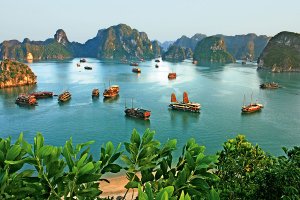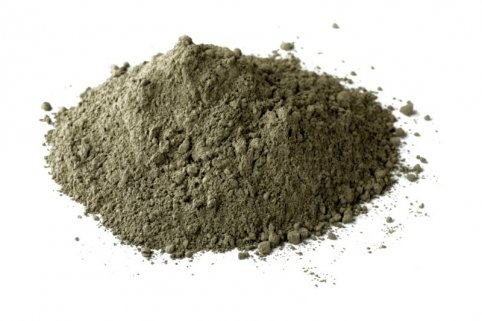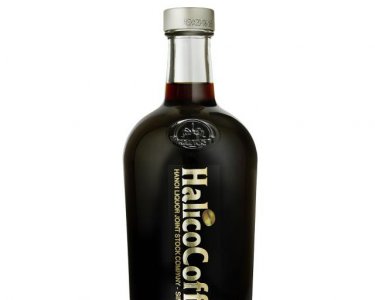Couldn't find the product you want?
Fill out this form to request the product.
Exports

Vietnam has a developing planned economy and market economy. Vietnam has become a leading agricultural exporter and served as an attractive destination for foreign investment in Southeast Asia. In a similar fashion to other Communist countries after the end of the Cold War the planned economy of Vietnam lost the momentum for productivity and sustainable growth. In the current period the economy of Vietnam relies largely on foreign direct investment to attract the capital from overseas to support its continual economic rigorousness.
Manufacturing, information technology and high-tech industries now form a large and fast-growing part of the national economy. Though Vietnam is a relative newcomer to the oil industry, it is currently the third-largest oil producer in Southeast Asia.
Mobile phones and their parts were both imported and exported in large numbers, while in the natural resources market, crude oil was a top-ranking export and high levels of iron and steel were imported during this period.
As a result of several land reform measures, Vietnam has become a major exporter of agricultural products. It is now the world's largest producer of cashew nuts, with a one-third global share; the largest producer of black pepper, accounting for one-third of the world's market; and the second-largest rice exporter in the world, after Thailand. Vietnam is the world's second largest exporter of coffee. Other primary Vietnamese exports include tea, rubber, and fishery products.
In the last 5 years, Vietnam's exports have doubled as competitive minimum wage and low costs of utilities boosted foreign direct investment. Vietnam main exports are clothing and footwear, machinery, transports and equipment. Other exports of Vietnam include food, live animals, manufactured goods and fuel.
Main export partners of Vietnam are the United States, Japan, China, South Korea, Malaysia and Germany.
Customs requirements of Vietnam
Vietnam Customs Contacts
General Department of Vietnam Customs
Website: http://www.customs.gov.vn/Home.aspx?language=en-US
Email: webmaster@customs.gov.vn
Address: Block E3 - Duong Dinh Nghe street, Yen Hoa, Cau Giay, Hanoi, Vietnam
Phone: (+844) 39440833 (ext: 8623)
Vietnam is the easternmost country situated on the Indochina Peninsula in Southeast Asia, bordered by China, Laos, Cambodia and Malaysia across the South China Sea. Vietnam is a member of the Asia-Pacific Economic Cooperation (APEC), Association of Southeast Asian Nations (ASEAN), International Monetary Fund (IMF), World Customs Organization, World Trade Organization and other international organizations.
Tariffs
Tariffs and duty rates are frequently revised and the tariffs levied are decreasing in line with the country’s WTO commitments.
Surtaxes can be levied in exceptional cases, such as countervailing duties as anti-dumping measure.
Vietnam has issued over 5000 product standards, many of which are in accordance with international standards. Specific information can be provided by import partners or may be sought from the relevant ministry or authority or from the Directorate for Standards and Quality (STAMEQ) under the Ministry of Science, Technology and Environment.
Non-tariff barriers
The following goods are prohibited from import into Vietnam:
- weapons, ammunition and explosive materials (except industrial explosives), military technical equipment; certain firecrackers
- second hand consumer goods, including:
- textiles and garments, shoes and sandals, clothing
- electronics
- appliances e.g. refrigerator
- medical apparatuses
- furniture and interior decoration
- household goods made of porcelain, terracotta and china, glass, metal, resin, rubber, plastics
- motors and certain vehicle parts
- bicycles
- ambulances
- two and three wheeled motor vehicles
- cultural products prohibited from dissemination and circulation in Vietnam; radio equipment inconsistent with Vietnamese radio frequency planning or technical regulations
- vehicles from which the frame or engine number has been removed or designed for driving on the left
- chemical listed in Appendix III of the Rotterdam Convention and other toxic chemicals and pesticides, plus products containing asbestos or Chlorofluorocarbon (CFC) waste and scrap.
The following goods are prohibited from export out of Vietnam:
- weapons, ammunition, explosive materials (except industrial explosives) and military technical equipment
- national relics and antiques; cultural products in the category prohibited from dissemination and circulation in Vietnam
- round timber and sawn timber produced from domestic natural forests; rare and precious wild fauna and flora
- equipment used for the encryption of national secrets
- type one toxic chemicals stipulated in the Treaty Prohibiting Chemical Weapons and in Annex III of the Law on chemicals and its Decrees.
Import/export in Free Trade Zones
Companies may choose to produce within an Export Processing Zone (EPZ) in order to take advantage of the exemptions from customs duties. Industrial Parks (IPs) offer various support services as well as tax advantages. The specific incentives and support measures that are available vary across individual EPZs and Ips.
Special certificates
Health certificates are required to import plant and animal products. Live animals require certificates attesting that they are free of communicable diseases. Pharmaceutical products must be registered and approved by the Ministry of Health. All imported foodstuff for consumption in Vietnam requires a Certificate of Analysis.
Methods of quoting and payment
The most common method of payment for import transactions into Vietnam is Confirmed Letter of Credit. Distributors will typically ask for between 30 and 180 days payment terms.
Documentary requirements
Circular No. 128/2013/TT-BTC, guides import and export procedures. Several copies of documents can be required to complete the import procedures. The necessity of translations into Vietnamese can be specified in the import contract. Originals should be signed with blue or red, but not black ink.
A certificate of inspection or documentation confirming exemptions from inspection, as well as an import licence are required for certain types of goods. E-customs declarations are possible and welcome.
Required documents for import:
Pro-forma invoice
Include the same type of information as a commercial invoice.
Commercial invoice
Vietnamese foreign trading organisations usually require the following information to be contained on the commercial invoice:
- a complete description of the goods
- product codes and serial numbers (if applicable)
- invoice number(s)
- number of items or containers
- net and gross weights
- net value which must be close to the market price
- the country of origin
Bill of lading
Importer’s instructions should be followed and all information must conform with other shipping documents.
Packing list
Use of a packing list is recommended even if not specifically required by the import contract.
Certificate of insurance
Having obtained insurance coverage for a shipment, a copy of the insurance certificate or insurance policy should be included in the import dossier.
Insurance
Loss or damage of a shipment is possible in the form of cargo insurance or of a contingency insurance clause.
Sources:
http://www.vietnam-briefing.com/news/customs-procedures-in-vietnam.html/
http://vietnamembassy-usa.org/basic-page/custom-regulations

